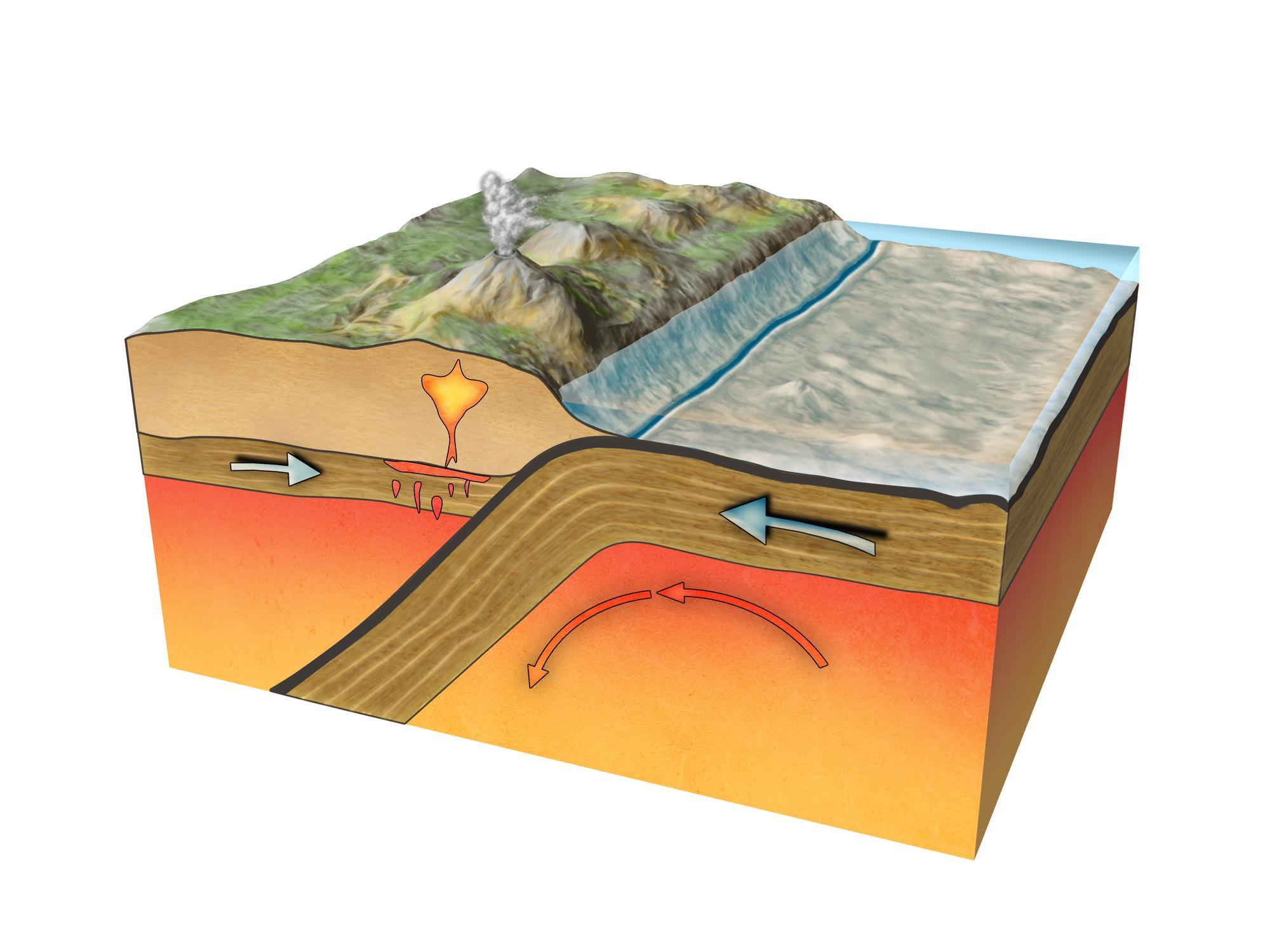How Are Mountains Created? - Orogenesis Mountain Formation


We may look at mountains and can only imagine they have been there forever. In actuality, all mountains had to be formed somehow. All of the structures on the earth's surface had to be developed to some degree and the process of mountain formation is no exception. The formation of mountains is associated with both endogenous and exogenous factors via a process known as orogenesis.
At thedailyECO, we ask how are mountains created? We look at the orogenesis mountain formation process and see examples of this process in nature.
Orogenesis: the formation of mountains
After many scientific observations and investigations, by the 1970s the theory of plate tectonics made it possible to explain how mountains originate. This theory was an initial link that allowed the elaboration of a coherent explanation about the process of formation of the terrestrial mountain ranges. These mountain ranges are present on the lithosphere, i.e. the earth's crust and upper mantle.
In order to understand the formation of mountains, we must understand what happens below them, under the surface of the earth. Mountains originate through a complex geological process called orogenesis (also known as orogeny) in which a large area of the earth's crust is shortened and thickened. This process occurs due to deformation and fracturing through the movement of large plates called tectonic plates.
The shifting of tectonic plates leads to mountain formation thanks to endogenous factors (i.e. factors from the plates themselves):
- Orogeny takes place from the increase in temperature that comes from the gravitational tension of the Earth and the disintegration of the atoms that compose it. As the tectonic plates move, the heat from underneath the crust has an effect on the terrestrial material above it.
- This heat is transferred from the warmer internal areas to the colder areas of the earth's lithosphere, producing a convergent movement in which the continental plates come together.
- The final part of the formation of the mountains is due to the rising warm material passing up above the earth's surface. This marks the end of the movements and the union of the two mobile plates. From this instance, the mountains behave as stable structures that can remain for millions of years.
Once the uplift has produced the mountain ranges, these are shaped by exogenous factors. Such factors include erosion caused by ice, wind and rain. It is these processes which give the mountains their shape and structure, for example mountain peaks and cliff edges.
Mountains can be found in various parts of the world. Learn more with our article explaining the different types of natural regions with examples.

Mountain Features
Each mountain present particular characteristics that define them. Many of their characteristics are defined by their height and the weather systems of their geographical locations. These characteristics lead to different flora and fauna being able to exist in these often difficult habitats.
Mountain weather
In mountain ranges, the climate is generally more humid and cold compared to the lowlands. The average temperatures are low and these decrease as the altitude increases. It is said that every 100 meters in height, the air temperature decreases from 0.5 °C to 1 °C (32.9 to 33.8 ºF).
When the air masses coming from the oceans loaded with moisture collide with these mountain ranges, they rise above them. When they do so they cool and condense, giving rise to precipitation, generally in the form of snow. When this snow accumulates and compacts as the years go by, glaciers are formed, large freshwater reservoirs present at the top of many mountains.
Mountain vegetation
Factors such as temperature, humidity, soil characteristics and solar radiation determine the different vegetation floors that exist on a given mountain. These territories are made up of different plant communities.
In the lower regions, i.e. those at a lower altitude, the plant species that develop are similar to the flat environment. As the height increases, the species present adaptations to be able to face adverse conditions, such as freezing temperature, harsh rain and very strong winds. As we advance even further upwards, the richness of species decreases. Plant species vary depending on the continent and latitude of a given mountain.
Mountain wildlife
There are animals that can live at high altitudes. Although mountains are a challenging environment for these species, many can adapt and survive against these conditions. Let's get to know some of them now:
- Guanaco (Lama guanicoe)
- Llama (Lama glama)
- Vicuna (Vicugna vicugna)
- Deer such as the South Andean deer (Hippocamelus bisulcus) and the taruca (Hippocamelus antisensis)
- Bears such as the Himalayan black bear (Ursus thibetanus laniger)
- Foxes such as the culpeo (Lycalopex culpaeus) and the South American gray fox (Lycalopex griseus)
- Wolves such as the Iberian wolf (Canis lupus signatus) and the Himalayan wolf (Canis himalayensis)
- Cougar (Puma concolor) and many other felines, such as the kodkod (Leopardus guigna) and the snow leopard (Panthera uncia)
- Armadillos like the pichi (Zaedyus pichiy)
- Andean condor (Vultur gryphus) which glides in the air and nests in holes or caves present in rocks at high altitudes
- Darwin's rhea (Rhea pennata)
- Condors or New World vultures of the family Cathartidae
- Eagles such as the black-chested buzzard-eagle (Geranoaetus melanoleucus)
- Toucans such as the Plate-billed mountain toucan (Andigena laminirostris)
- Falcons such as the peregrine falcon (Falco peregrinus)
- Blackbirds or thrushes of the genus Turdus
It should be noted that the species that inhabit the mountains around the world are very numerous and we can only mention a few of them here.

types of mountains
Although all orogenesis mountain creation is due to tectonic movement, there are different types of mountain formation within this process. For this reason, geologists and volcanologists have classified different types of mountains into the following categories:
- Volcanic mountains: volcanic mountains are those that rise during volcanic eruptions due to the accumulation and hardening of magma and by rocks that have solidified at depths below the earth's crust.
- Folded or folding mountains: folding mountains are those that are formed by the collision of tectonic plates in which the rocks that make them up are compressed and folded. It is this way that the extensive mountain ranges that we know today have originated.
- Fractured or block mountains: block mountains are those that are formed by geological faults, i.e. by breaks that occur in the earth's crust. The separation of the surface causes powerful forces to separate tectonic plates and the center block to fall. The result is the formation of a mountain within the fault.
- Warped, residual or denudation mountains: these types of mountain are formed as a result of the erosion of an area that was formerly elevated. Erosion is mainly caused by climatic factors, whether by water, wind or glacial erosion.
One of the world's most famous mountain ranges is the Andes of South America. Take a look at our related article to see the plants and animals of the Andean Mountains.
If you want to read similar articles to How Are Mountains Created? - Orogenesis Mountain Formation, we recommend you visit our Facts about nature category.
- Tarbuck, E. J., Lutgens, F. K., Rate, D., & Cientificas, A. T. (2005). Earth sciences. Madrid: Pearson Education.
- Urquí, L. C. (2018). What are mountains and how are they formed?







